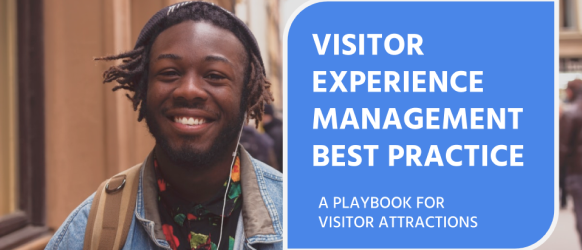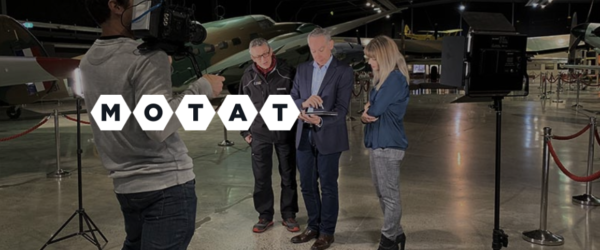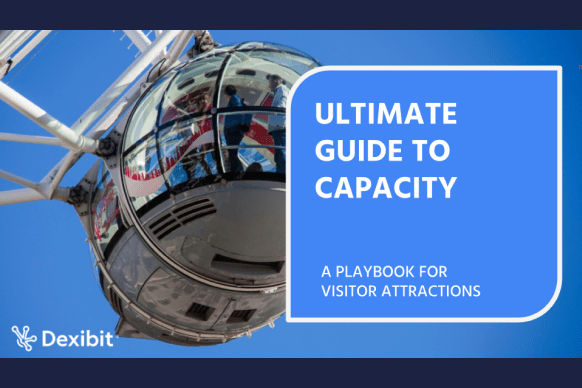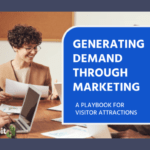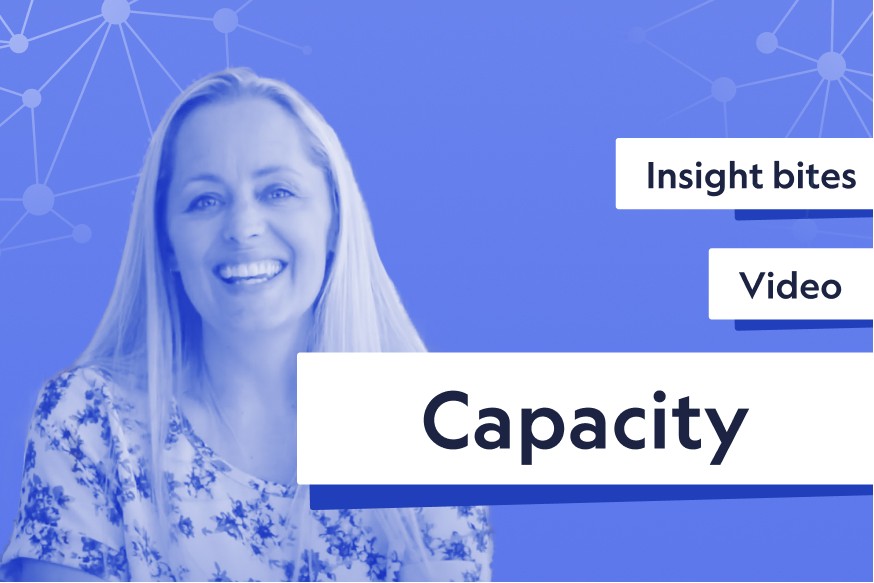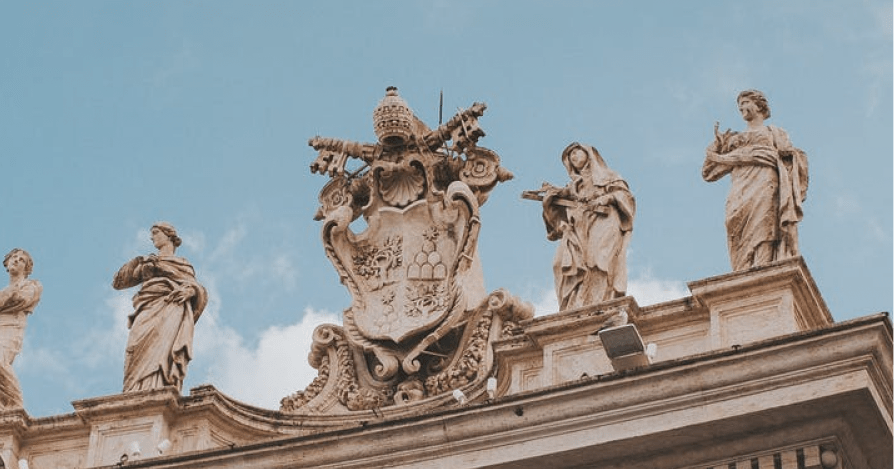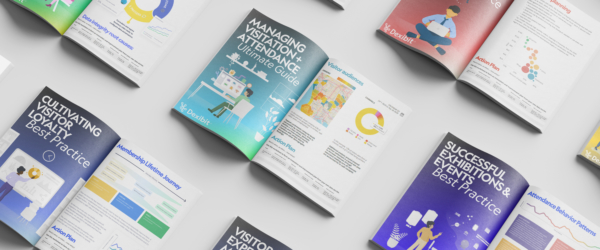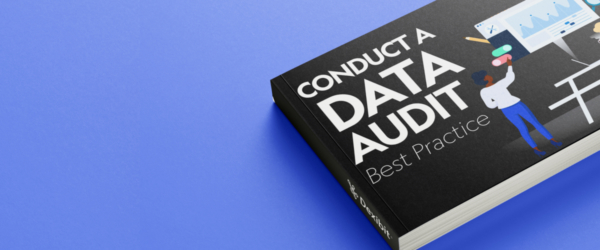Angie: Hello and welcome to the Data Diaries. Today we’re here in Washington, DC with the team at the National Museum of African American History and Culture who are experts at crowd control and capacity management, here to share their experiences with the world, given this is such a hot topic for many visitor attractions who are grappling with new or reduced capacity constraints in the age of COVID-19. I’m here with Herrman Marigny, Visitor Services Manager, and Deanna Wynn, the Assistant Director for Information Technology. A big welcome to you both.
DeAnna: Thank you.
Herman: Thank you, Angie. Excited to be here.
Angie: The museum are absolute pros at this capacity balancing act. You’ve had this aspect to the museum’s operations since you opened originally a few years back and given, you’ve always had to control crowds and demand. How different are things on that front for your team post versus pre COVID-19?
Herman: I was only actually with NMAAHC for three months prior to COVID. In that short time I had an opportunity to observe how visitor flow what’s happening at the museum and get a feel for how the institution was operating and working. And one of the things during that onboarding period that I learned was the conversation around the importance of balancing safety and satisfaction was even important pre COVID. NMAAHC has had, or required time passes, you know, since 2016 and their opening. And the primary driver behind that is there was increased demand.
And so to make sure that we’re able to manage crowds safety from a n overcrowding perspective, the time ticketing system was great. A lot of the focus we’re shifting towards making sure we were utilizing capacity to the best of our abilities. So we had the time ticket passes, that program was running fine.
And then new initiatives were rolled out to make getting a ticket to the museum even more accessible. So one of those programs was the walkup window. Initiative where folks could come up to the museum without a pass on Wednesdays and off peak season and on a consistent and kind of regular basis be granted access into the museum.
And the sentiment at the time was if those types of programs continue to go well, that eventually in the future, we hope to move to a place where eventually you wouldn’t require a pass to get into NMAAHC in being in line with the way that the other Smithsonian operated at the time in this post COVID environment.
It’s, it’s very different again, with safety and satisfaction stand top of mind, but with safety, having to drastically reduce capacity has definitely impacted how accessible the museum is has become a big driver. Behind the reasoning for the capacity limits in the volume that we’ve chosen is directly tied to some of the guidelines to health and safety guidelines that were laid out so broadly.
And of course, all of the Smithsonian units are following DC’s guidance, the 200 square feet per person. Then from that guidance units kind of have some discretion how risk averse or how aggressive they want it to be beyond that point. One of the things that I was really pleased by was NMAAHC’s openness to taking a very conservative approach to the number of visitors we let into the space.
And I think that that was one of the key things. Pre COVID, safety was still a primary concern, which is why we had the timed passes. But the ultimate goal was to allow as many people in, as we could safely fit in versus post COVID. Although we may have had the capacity to allow a few more visitors in, because it was untested, because we hadn’t opened the doors and there was still a theory overall.
There was a very conservative approach. And then quite frankly, at the time a lot of these decisions were being made. Some of the data around the impacts of COVID-19, was also becoming available. And, one of the pride points of NMAAHC as an institution is we attract a very diverse audience into the museum space, many of whom it’s their first time visiting a museum. But we’re also seeing in parallel that the COVID-19 virus had had disproportionate impact on diverse communities across the U.S. And so as we’re thinking about our audience and who we’re allowing back into the space, there was a sense of responsibility to those audience members, and I think that that in so many ways is very different from, I think, a traditional institution that may have a more objects centered approach.
This visitor centered decision-making, factoring in empathy and also taking into consideration, some of those broader social contexts.
DeAnna: Hermand said something I thought was just really insightful. And I have to say, I haven’t really heard this expression used a lot in other places, but he talked about using empathy as it relates to engaging kind of with [00:05:00] visitors and what that means for me from an I.T. perspective is.
It goes back to CRM and I think of what is, and the Dexibit platform and the other types of data that we can and will pull into the platform is, what type of information can I make available to Herman and his team, so they have kind of a complete picture of visitors who are ticketed, who are coming to the museum, a complete picture of the cultural ecosystem that is Washington DC. And so that when the visitor services team is in engaging with the public, to either, allow them into NMAAHC or ask them to wait or propose alternatives, they just have this wide range of information available to them to have that conversation. So, the focus that Herman and his team has on empathy, I think is probably maybe one of the differentiating features or factors that that helps make NMAAHC so popular is really being empathetic to what we want the visitor experience to be. And in any way that from a systems perspective that, we can make that information available throughout the museum, but certainly to the visitor services group, I think is really critical to making sure that visitors are having an optimal exposure.
Angie: How about on the technology side? I know for many places there’s been a huge need to step up technology wise to meet the needs of COVID-19, but in your case, the museum was so well-prepared in the first place to manage capacity. Have you seen the need for a technology change on your side?
DeAnna: Yes. I think, coming in to the museum in April of this year, one of the first observations that I made is, I came in post COVID, but I was well aware that from a ticketing perspective, the museum was pretty far ahead of other institutions of its type and how ticketing and including walk-up Wednesdays and managing capacity from the demand perspective was managed.
I think NMAAHC has done a fantastic job. But what really became clear as we started to enter or exit kind of this COVID period was really to use data and to get more data points actually to use to our advantage, to manage capacity on the supply side, so if demand is understanding how many people we anticipate coming into the museum.
We wantedit to have insights, such as footfall to go along with ticketing to really understand, who actually showed up, what were our attrition rates looking like? And then more on a more granular basis. What was that visitor journey through the exhibition spaces and through the galleries really like? One other observation that I had, which is a little external to NMAAHC is, and what NMAAHC had done very well, became adopted across Smithsonian.
And I, I saw that. All the museums recognized a need to more effectively kind of plan and manage, visitor flow, but also to be a bit more proactive. And I think NMAAHC is doing a fantastic job with this at not just managing visitor capacity, but starting to really look more broadly at managing the visitor experience.
So really from a technology perspective, it really is looking at what other types of data and other types of insights about visitors. Can we begin to sort of assemble and consolidate and perform some analytics on. And, I know maybe later we’ll talk a little bit about that.
Our focus right now has been on footfall and having that data sort of match up or be consolidated with the ticketing data. We’ve had some successes there and lots of lessons learned. One of, I think the chief lessons learned, I would say around the footfall counters and with Sensource is, is just making sure that the, that the implementation and the placement, you know, of these cameras really are reflective of visitor flow through the museums.
And so there’s a bit of trial and error there because you frankly can’t quite get it right until you have traffic in the museum to then go back, tweak the placement of cameras, or really understand what the flow is. So we’re learning more about, how our visitors travel through the museums, you know, as we go and as we roll in other systems, for example, begin to gather, insights through wifi access. We’ll learn from the experiences that we’ve gotten out of their sensors implementation, I think will help guide and inform future implementations of visitor capacity management solutions.
Angie: And that’s fantastic that the Smithsonian has had such a great example in house to [00:10:00] follow on this topic with the need to move so quickly to reopen, especially given they’ve had to do that at a time with no visitors to practice on, as you mentioned.
DeAnna: It’s true. For often it was Herman and his team, trying to simulate visitor traffic before the before the museum opened. And now that we are open and have good numbers, it just gives us that much more data. Not only to tweak and refine the system but also just to get more insights into the visitor experience, which is really important to the museum.
Angie: The museum had started experimenting with walk-ups on certain days of the week and times of the year. How do you make that choice between offering walkup or advanced passes or a hybrid between the two of doing both at the same time? What does that sort of discussion look like internally for you?
Herman: The option to offer advanced passes is heavily influenced by wanting to make sure that the visitors who are fortunate enough to secure passes, have enough time to plan their visit ahead of time. What we also know at the same time is managing attrition is a real concern. We will release passes, every evening at around 4.30. So right after the museum closes for the next day, and then we’ll also do another release of passes for the morning, and the idea there again is to just offset what we’ve comfortably known to be our standard attrition.Attrition.
Angie: That’s actually a good point. Being able to do one or both at the same time, too. Both be able to serve the visitor experience so that you can have those people who like to plan ahead versus those people who like to show up. And that’s given you the flexibility by the sounds of it, to manage fluctuating attrition, and sort of tip that over as well.
Herman: We allocate our 11:00 AM opening passes and the 11 and 12 o’clock slot so that we, we kind of fill the building up between those hours and then we drastically reduce the number of passes we make available between the one o’clock and two o’clock hour, in anticipation that the building will be close to its maximum capacity.
And those visitors that came in in the morning would just be wrapping up their visit, between one o’clock and two o’clock. And hopefully you see that shift happen of those visitors exiting and then your kind of second wave of visitors and turn the space when we are making that choice to allocate same day online passes.
Attrition is normally very top of mind for that. And so for us at NMAAHC, we know our standard attrition is about 40% for the same day online pass application specific, because though that those visitors have a slightly lower attrition. Because they’re there, they’ve made the decision either yesterday or the morning of to attend the museum.
We’re really careful about how we allocate those passes. The advance passes are distributed evenly across our time slots across the board. The same day online passes, they do follow a check mark where we start very high with the allocation. And then, as we get closer to the one o’clock to two o’clock, we offer very little passes during that time slot. And then during the last time or that day, which is two o’clock, you know, we try to open it up managing the same day online passes, helps us to kind of combat that attrition.
Angie: What goes into that decision of what volume to set capacity for the museum? And then how do you work at how many passes to offer and is that impacted by dwell time or anything like that?
Herman: Yeah, that’s exactly what’s happening. So we’ve worked out, what the maximum capacity is for the museum. And then when you factor in the dwell time of average visitor, so now we’re seeing that that’s approximately three hours, in the past it’s been four, but currently our, our cafes store isn’t open. So based off of the data that we received, we safely assume that visitors will be here for approximately three hours, two hours in the building. And so, you know, we have the schedule of advanced passes and that’s pretty set, but we know things happen, right. I mean, even with this year being the year that COVID happened, so many travel plans were adjusted. And quite frankly, visitors who felt comfortable or safe coming into a museum, and so adjusting, or taking those things into consideration, when we’re allocating same day online passes is a very big factor.
Angie: What are some of the systems that you’re using to manage all of this?
DeAnna: Well, on the ticketing side, we are using a cloud-based solution Etix. For footfall monitoring we’re using Sensource and since ours really has two components to it, it’s a cloud and or server based solution, that primarily works with cameras that you would place around the perimeters of the museum, where we have that for entry and exit as well as around key spaces throughout the exhibition space in [00:15:00] and galleries. Sensource also has a module or an application called safe space which we are really just starting to use. Safe space provides a bit more granularity into things like dwell time and will enable us to set capacity limits at the gallery or excavation space level.
Primarily right now we’re using Sensource in the aggregate. So we can see who’s come into the museum, who’s there at any given point, in terms of number, it’s all anonymized data, but how many people have have entered and exited. A solution that we’ll be using as is Altum. And that really requires visitors to enroll in our wifi system. So they’d enroll in Smithsonian visitor wifi, and then we’d really be able to track their journey through the museum. I think that will be important along with the Sensource data again, to match up against the ticketing data, because it gives us a sense of, of a couple of things .
One is, how many people and when do we expect visitors in the museum, then we can look a bit of our actuals. How many of the ticketed, visitors actually, turned up and then where are they spending time in the museum? How we use those insights? I think, for right now is around capacity management, but I can easily envision expanding how those insights are used to not only, to influence existing visitors, but perhaps to attract new visitors and to enrich the experience of, of visitors who are in the mix.
Angie: It’s amazing, isn’t it for something like capacity when you dig into it? There’s actually lot s of different data sources that you have to tap into. And in order to get that insight, it’s a tricky puzzle to stitch everything together in order to get an idea of what’s happening out on the floor and get that up to your team.
DeAnna: Some future capabilities that we are considering for beyond capacity management, for example, there is an interest in enriching the data that we currently collect around customer relationship management. So CRM, we don’t have a fully fledged CRM capability at the moment. And we are interested in, in pursuing that. There, there are many, many different, I would say visitor types or engagement with the public that we really want to explore.
So for example, members, how many of our members we’re converting into visitors or even vice versa. How many visitors ultimately become members? Are there other engagement points with the public? For example, even through some of our digital assets that we may be able to engage in a way to either convert them into visitors, convert them into members to encourage them to buy from the museum through either our point of sale or through a Smithsonian enterprises e-commerce program, although, as has Herman said, previously our immediate focus is really on managing the capacity of our visitors and the visitor experience for individuals who come to the museum. But we certainly see expanding those expanding that out and getting insights beyond just members of the public who visited us in person.
Angie: You mentioned that for NMAAHC, you’re seeing 40% attrition, right? That’s sounds slightly lower, which is great, than what we’re seeing in the wider museum space. I think across the sector around 50% of visitors who book an advanced past that is free, don’t show up, that attrition rate. And that’s, as you mentioned, it has a big impact on, on managing capacity because, we can think that we might be selling out tickets, but then experiencing a significant number of no shows at the door and any other ways that you can sort of counteract that or that your team deal with it, other than dealing with sort of next day or same day.
Herman: It’s been a hybrid. So the, the same day online passes is definitely, the most effective method, but when I think about the visitor journey, the pre-visit touchpoint opportunities definitely include, reminder emails that go out to the visitors. At the moment the primary messaging in those pre-visit messages are still COVID related, making sure visitors understand what the expectation is, maintaining social distance and wearing your mask when you come to the museum. But they also do serve as a great reminder for visitors about their upcoming visit.
When we move into a space where we have a more full-fledged CRM, I can definitely envision an opportunity to confirm in those messages, ‘Hey, are you still coming tomorrow?’. And I think that those types of proactive methods also help fight off the attrition.
Angie: And are you having to [00:20:00] turn people away at the door who don’t have a ticket booked or even somebody who has one booked? If you’re at capacity, what sort of tactics have you prepared your team with to handle that sort of situation?
Herman: Unfortunately that is one of the realities that we deal with, that the markets quite frankly always had to deal with because they’ve always had time passes. There are two parts, two major parts. One is definitely starting from a place of empathy. When we’re training our staff, we do, you know, emphasize how difficult it is sometimes to get passes to the museum. And then also how far some visitors come to actually journey to the museum. And if, unfortunately they had some misinformation or they just were not aware that, you know, our institution require passes to make sure that we’re sensitive to that.
And now, transparency is also very important to us. We’re very forward about the reasons that we have limited capacity and being that being primarily centered around COVID right around the new safety protocols that are in place. And then after that moment of transparency and empathy we offer the visitors information around how they can go about getting passes.
So we inform them about the same day passes that we offer every morning at 11:00 AM. We also inform them about the passes that go on sale in the evening, you know, at 4.30, the next day, and also point them to the QR codes that are immediately available when you’re onsite. So if we’re having that conversation on NMAAHC’s campus, the QR codes that redirect you to the online passes are there and available for the visitor to have immediately, even if they walk away without a pass.
But then the third thing, and know, I think that this is critical as well is we have empowered our team leads our to kind of make that decision on issuing a pass to a visitor in real time. Because again, circumstances are different. If there is someone that is local and, you know, has the ability to kind of come back tomorrow or come back the next day, versus the rare occasions that we have, where a visitor, you know, has traveled from quite a distance and just so happened to be in time and have the opportunity, and know that they won’t have the opportunity again, for a while, we try to be as flexible and as accommodating as possible, just kind of keeping that visitor centered approach, balancing safety. And so, we emphasize the importance of issuing every visitor a pass. It’s not just a scenario where we can let you in. We were sure to collect the information of all of the visitors on site, just for COVID safety reasons, in case we have to report back out or get in contact with the visitors who are onsite that day.
So yes, it’s definitely something our frontline team has had to deal with, even pre COVID. But what we found is when we’re transparent about the reasoning, why, especially the safety related concerns, visitors are very understanding, and thankful for the opportunities to have access to the same day passes that are available in the evenings.
Angie: That’s such an important point that those advanced passes are doing double duty, really as a contact tracing as well. You’ve got quite a complex site to manage there because you’ve got this pinch point of sorts that happens early within that visitor experience that Deanna was talking to. For our listeners who haven’t been to the museum yet, when you come in, you actually begin your journey, and Herman correct me if I’m getting this wrong, but you begin underground. So you go in, in an elevator or down the escalator at a point where you’ve got the Oprah Winfrey theater, you’ve got entrance to the cafe, you’ve got the special exhibition gallery and then the entrance to the beginning of the visitor experience, starting with a history gallery.
And normal times, this is actually a really busy space. And then that goes into a tighter space for the beginning of an exhibit on slavery and freedom. And I understand it’s purposefully designed like that, but I imagine very tricky to manage with the millions of people that you can see in a year. So how do your team manage that spot and that nuance in particular?
Herman: Definitely the thought of letting the visitors kind of create their own experience, where at the welcome desk, there are some visitors that have very specific artifacts or exhibits that they want to see and we can easily direct them there. And then there are the visitors that come and they want to know. Just tell me, tell me where to start, where to begin the journey. And the history gallery is always it’s the preferred exhibit, right? You have chronological history from the 1600, the transatlantic slave trade all the way through. And beyond the election of Barack Obama in 2008. So a wildly popular exhibit.
And as you mentioned, when you start that journey with the transatlantic slave trade, the brilliant exhibition team at Newmark was also sure to kind of make that space really tight and enclosed to kind of recreate the experience of being transported on a slave vessel. And when you’re looking at that in a post COVID world, there are multiple flags that kind of come up for that. A space as intentionally designed to be kind of [00:25:00] compact is a huge area of concern, but you balance that against it being one of the, you know, the most popular attraction at the museum. It was a tricky challenge to think through and work through with leaders of the museum and leaders of the curatorial team as well.
But some key decisions that helped us kind of manage visitor flow in that area was first the decision to modify the exhibition experience. So when you step into the space, it is a combination of museum artifacts that help tell that story. But then there are also a number of videos as well that play in the space. And one of the early decisions that was made was to turn off all of the videos within the space. I mean, the idea was that if you made it an audio only experience in that specific section, that it would help decrease the dwell time within that space writing and kind of keep visitors moving through at a somewhat consistent.
And the second big thing is, in addition to having the footfall counters, helped give us an idea of how many visitors are in our history galleries. We did make the decision to also have visitor services team members there to also manually manage that process. And I say that that’s a big thing decision because again, having that empathetic approach towards visitors is important, but when we were retraining our staff, that conversation actually starts with the frontline team members where they’re doing.
So making sure that we are creating a working environment that is safe for them so that they can extend excellent customer service to our business. And so making sure we thought through, you know, where that team member would stand, where they would be, safe to manage visitor crowd flow, but then also able to keep an eye on and prevent pinch points, crowding, from forming was extremely critical in that space. So again, in that specific exhibit, you have a combination, right? The footfall counters, the technology that’s helping, you have the modified exhibition experience to the curatorial team’s contribution to helping visitor flow through that space. And you also have the visitor services team member that has their eyes on monitoring the visitor flow, encouraging visitors to maintain this social distance, encouraging visitors, to make sure that they keep their mask on, that safety information is reiterated within that space. And I’m very happy to report that we’ve seen really great success with managing that space, using the combination of those three things.
Angie: What are the key insights that you and your management team and your team on the floor need to achieve all of these sorts of things and, and come up with those ideas and control that capacity?
DeAnna: Whether we are implementing the footfall counters or wifi insights, or any other technology capability that’s going to directly monitor the visitor experience, it’s going to be important for, any, IT director, CIO, IT team to really partner up with the equivalent of a visitor services group.
The way that we’ve done with, with Herman and, and walk the floors, walk through the exhibits, see where cameras are going to go see where you need your access points, really understand that visitor. So that what you are implementing is relevant in real time and it’s not conceptual. And one of the lessons learned that we got from that really had to do with the placement of some cameras, which made sense on a blueprint, but we needed to go in and adjust. So we really were actually seeing and capturing the way visitors may have entered or exited a particular gallery space. So, walk the floors, I think is really important when you’re, you are implementing kind of our visitor tracking monitor journey, experience management solution.
The second thing that I would say from technology perspective and not really a technology perspective, I would say from really just a leadership perspective is data. The more that we are able to understand the kind of needs and desires and expectations for the journey through the museum that our visitors have felt, the more effective we’ll be able to help craft what that experience is going to be.
And that’s not just capacity data, as we mentioned, it’s CRM data. ‘ Why are you in the Washington DC area? Are you going to other museums? What would you like to see from here wherever you visited before?’ It’s some of the tourism data, what’s happening in the vicinity around the museum on at any given point that may be of use or interest to our visitors, something as mundane, but that can be as impactful as weather.
Herman mentioned, people are often traveling across the country and sometimes across the world to come visit us. So the more that we are able to [00:30:00] proactively share with them what to expect when they arrive, I think the better that experience will be. So from my perspective, really having a data rich experience, a data rich environment with which, or by which we can help craft and drive what the visitor experience is going to be, the more effective we’re going to enable our visitors to enjoy their time in the museum.
And then again, for the technology implementation piece, really, when I say walk the museum, when I really mean, really understand the business processes for lack of a better term, that we’re are trying to effect change in, not in NMAAHCthat I’ve seen just in prior places where I’ve been, you know, the technology solution sometimes is agnostic and it, and it works, but if it’s not really meeting the business outcomes, then it’s not going to be effective. And what that means really for this particular purpose where we’re talking about capacity management specifically, and visitor experience in general, your IT team really needs to understand that business environment, the museum environment, and the expectations that the museum has for what they want the visitor experience to be, before you start implementing one piece of technology, you need to know what you’re working.
Herman: Yeah, absolutely. I think Deanna hit one of the very critical pieces. It’s that walking the floor and making sure that there are multiple departments present, the relationship between visitor services and the IT team has been invaluable as we’ve journeyed together in this reopening.
Again from the visitor services perspective, one of the things that NMAAHC did that was brilliant, was we understood where our new maximum capacity would be in the post COVID world, but we did not open day one with that new capacity limit. We slowly worked our way up to that maximum capacity figure over the first three weeks of opening.
And what that allowed us to do was to test the system. And the protocols that we had in place, and it also allowed the frontline visitor team to become comfortable with those new policies, those new protocols. And then also making sure that we had our team in a space where they were comfortable sharing insights or tweaks or adjustments that needed to be made.
And during that same period of time, I was able to work closely with the IT team as we tested a lot of the new platforms that were in place. Because, as DeAnna said so beautifully. Having them in place is one thing, but making sure that they serve a true business function is critical.
And so getting to a place where you can trust the data and the insight that you’re getting from your platforms is critical. And that comes from spending that time with the systems, walking the building and collectively looking at the data that’s coming back. I think aside from that, specifically related to the platforms, DeAnna mentioned we do use Etix for our ticketing, but the the visitor feedback form, giving us some insight into how much time visitors are spending in the building, like understanding that dwell time is critical to the process. Having some insight into our hour by hour breakdown of anticipated visitor demand is also important.
And what I mean by that is if we’re in a space where we’ve reached capacity on our lower level, in our history gallery space, knowing that it’s the middle of the day, it’s 12 o’clock. And we are about to see, a rush of visitors or a new wave of visitors in the next hour, that helps my team make decisions about redirecting visitors.
So instead of recommending a visitor, start their journey on C3 in the history galleries, with the slave ships, we’re going to redirect them up to our upper levels , so they can start their journey with the parliament funks spaceship, the mothership that’s on the fourth floor of the museum and making sure that the visitor services team is informed about the exhibition offerings on each of the levels ensures that they’re able to communicate that to visitors. Because again, all of the experiences in NMAAHC are unique and special in their own way. And although, the history gallery is the preferred starting point, if visitors can still have an impactful visit, if they have to start their journey on the top floor because of safety related reasons.
And then that’s where having the footfall counters installed on each floor has been invaluable because I can look on a dashboard and see, okay, we’re close to capacity in lower levels so lets start to redirect visitors to the upper floors.
I think what I’m excited about is the insights that we’ll get from the Altum system. Once that comes online and being able to more closely kind of track the visitor journey through the museum. I think what I envision is getting to a [00:35:00] place where we could kind of proactively recommend visitor tracks through the through the exhibit. If we are at this place now in a post COVID world, we’re making a lot of these visitor flow decisions for safety related reasons, I would love to see us get to a place where we have pre-built experiences around these paths that we need visitors to take.
The history gallery visitor path is defined because that’s a one-way directional gallery, but routinely we do need visitors to start their journey on the upper levels, again, just for safety reasons. But I would love to see an almost a curated recommended path for a visitor coming in. And that’s something that we could offer to them, even in the pre journey part of the day, what that will look like is the insights, tell us that routinely close to two, o’clock like we can anticipate slowdowns on the lower levels. And so if a visitor is on our site and they book a two o’clock time slot, we could offer a proactively offered them that journey experience through the museum where recommended experiences exhibitions that we have on the list are all in the upstairs galleries. And having the technology in place will allow us to make sure that we are offering these unique visitor experiences that are also rooted in their safety during their visit to the museum.
Angie: So the way that you’re looking at both that sort of safety and happiness and bringing together insights across such a significant number of data sources that you’re bringing together to get that full picture of your visitor experience and a great addition to there, with your surveys, to get an idea of their reflections and their feedback. And I think, especially because how visitors feel about their experience of the moment is so closely related to that topic of capacity too. I think we could do a whole other session on the experience side of insights as well.
Herman: That’s why DeAnna’s team is so invaluable!
DeAnna: Herman is so brilliant. I’m learning every time I listen to him talk, but to be able to even, simulate these curated experience before even providing that to the public, I think is it’s very next level, but I absolutely would love to be working with you on something like that. So once we have data from, you know, Etix and Sensource and Altum and all these tools to really be able to do your, what if analysis, if I am crowded at 2.30, what are some other journeys through the museum that we want to pursue? We’ll we’ll we’ll need to work together on that!.
Angie: Yeah, that sounds like a challenge for the year! Deanna, your team have done such an incredible job of instrumenting the museum for data, with hardware, and then integrating everything behind the scenes so that we can quickly get at data and insight from them, for the team to access and report on. And you’ve got a lot of sensors in that building to gather information on visitor flow and I’m aware that installing a hardware is always a finicky business. We’ve had some examples in London where museums have had significant undercounts due to like a blown device or even a light bulb outage casting a shadow on a spot, where that count was happening. What are some of the ‘gotchas’ to watch out for on that front that you’ve found?
DeAnna: Oh, wow. That’s a really good question. One potential gotcha, even before we get to counting, Herman have alluded to it a bit, or he talked about having a good partnership between visitor services and IT, I would add that when we were looking to expand the footprint for the Sensource cameras, we really needed to bring in our exhibitions team. Because one thing, and I frankly, had not really thought this through from an IT perspective, my focus on that, the cameras and similarly what the wireless access points for the wifi insights was really around coverage. So I wanted to make sure that the cameras would be placed optimally so that we could pick up the sort of digital images of people coming into or leaving a particular gallery space and our exhibition team kind of called timeout for a moment and said, ‘we need to make sure that wherever we are placing cameras or wires or anything that may even potentially be visible to the public, that it doesn’t disrupt the visitor’s experience of viewing that exhibition’. So we walk the floors with, with Herman’s team, my team, facilities team and exhibitions, to make sure that where things were currently placed and where they were going to be placed, were placed in such a way that they weren’t obtrusive, that they weren’t intrusive and that they would not disrupt the visitors viewing experience. So that was a really a great learning point for me, which is thinking [00:40:00] about the technology backend is critical to make sure that things work. But we also, in addition to meeting the business need, as Herman mentioned, we’ve also have to make sure that we are aligned aesthetically with the intent of a particular gallery. So I think that’s super, that’s very critical because quite frankly, if I had people counters that worked just a hundred percent effectiveness, but they disrupt the visitor experience, then you know, my solution may have been successful, but the intent and the goal of my solution will have failed. So that’s one gotcha. That we didn’t go there, we were able to catch it, but it’s something to really look out for.
And then the second big thing that I would say is the systems need time to learn and calibrate and validate the movement of actual people through the museum. So in the absence of having a large team of 50 to a hundred folks who can walk through various gallery spaces and test in real time, you’re always going to have to give yourself some way of having an enhanced or an expanded capacity of visitors to really validate that your people counters or that your wifi insights are working as intended.
And one thing that when we have run into some challenges there, and one thing that Herman’s team has done is, it’s old school, is go back to the clickers and to see, are our manual counts, within tolerance with the Sensource automated counters and then really refine the placement of cameras and the counting of the technology solution so that you have a high confidence level that it’s really mimicking the actual footfall and traffic through the through the space.
So give yourself time and work with an integrated team format, get everyone who needs to be involved in managing that experience in the implementation of whatever technology you’re going to put in place.
Angie: And we always find it’s really important to integrity test those hardware counters every quarter or so too. So I imagine you’ve got probably a maintenance plan around that as well?
DeAnna: Yeah, absolutely. So we’ll be looking to do that by January, I believe, we will have had this in place for about four months at that point. And there are two things that we, one thing that we know we want to do are some upgrades on some legacy cameras that were there.
That will be another lessons learned is I Would not recommend necessarily having a hybrid set of technology, if you can really standardize along one camera set, just so that the integrity of the data that you’re getting out of them will be consistent. So we are planning some upgrades for some legacy cameras, and then we would do more of an integrity test of the data at that point.
The only thing I would add, which I’ve probably said before, but it’s worth reemphasizing is partnership, partnership, partnership. The more that visitor services is supported with all of the partners within a museum and given the tools and the data that they need to be successful, then the more successful the museum is going to be in managing visitor capacity.
To my earlier point about bringing in other types of data. That also means that managing the visitor experiences is at an enterprise wide endeavor and it takes enterprise wide commitment for everyone who has a lever to pull, throughout the visitor experience, just to make sure that everyone’s engaged.
Angie: Thank you so much, to you both for taking the time out and as at such a busy time for sharing this expertise. And some really, really great tips and tricks there for everyone in the industry. And for more on capacity management, for listeners out there and, insights on places people love, go to www.dexibit.com for more.
Thank you so much, Herman, DeAnna.

